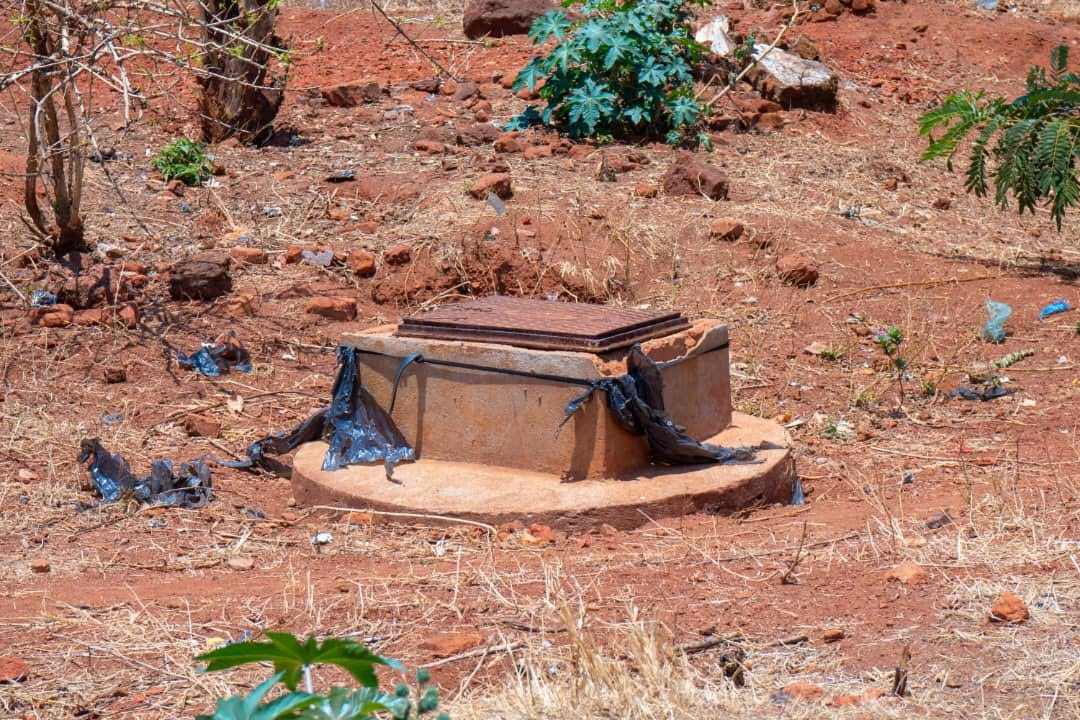Chisepo Health Centre Battles Decade-Long Placenta Pit Crisis
With no incinerator and an inadequate placenta pit, the facility poses hygiene risks for new mothers and the surrounding community.
DOWA, Malawi— A decade-old, overflowing placenta pit at a rural health clinic has become a symbol of the indignity and health risks faced by women in this community, writes Ireen Kayira.
At Chisepo Health Centre, the small, fly-infested pit is the sole waste management solution for placentas from the roughly six to seven babies delivered there each day.
With no incinerator and an inadequate placenta pit, the facility poses hygiene risks for new mothers and the surrounding community.
With no alternative, staff and villagers alike must endure the consequences of this neglected waste management solution.
Martha Chidele, a mother of three living near Chisepo Health Centre, has experienced firsthand the frustration and indignity stemming from the facility’s overfilled placenta pit.
Having delivered all her children at Chisepo, her experiences have left her with lingering feelings of disappointment and fear.
“As a mother, I am acutely aware of the hygiene risks posed by the full placenta pit, not only to myself and my children but to every expectant mother who walks through the hospital’s doors,” she says.
For Martha, the overfilled pit is more than just a nuisance; it’s a symbol of disregard for the dignity of women in her community.
The placenta represents a deeply personal journey of childbirth, a significant part of bringing life into the world.
“The placenta is part of me; seeing it discarded that way feels like they don’t see us. This lack of care in managing medical waste, especially something so intimate, makes us feel as though our rights to dignity and respect as women are overlooked,” Martha adds.
Beyond her frustration, Martha is deeply concerned as a member of the community. She worries about the health risks posed by the pit, especially for her children.
“Additionally, flies are in and out of my house all the time; there is a risk of infections spreading due to the centre's inadequate waste management,” she says, pausing to gather her thoughts.
The hospital in-charge at Chisepo Health Centre, Binwell Mphonda, recounts the longstanding issue of the placenta pit.
He states that the hospital delivers an average of six to seven babies a day, yet they are forced to use a placenta pit that has been overfilled for nearly a decade.
“The mothers that deliver at this hospital and everyone else are at risk of contracting infectious diseases like diarrhoea, as well as bacteria that can cause infections like tetanus and sepsis. Additionally, the hygiene of this health centre is questionable because of the flies that are always around,” he adds.
Mphonda notes that they have been using the overfilled placenta pit for close to ten years.
“For now, the old pit remains in use despite its condition. We try to manage the smell by adding chlorine, but it’s not enough. At one point, we were even forced to use a pit latrine when things became desperate,” he admits.
He explains that the hospital operates without an incinerator, and it has been like that since its inception.
However, Mphonda recalls a glimmer of hope years ago when the community volunteered to dig a new pit for a new placenta pit.
Unfortunately, government officials inspected it and found it didn’t meet the necessary standards, so the effort stalled.
“Recently, after a visit by the Medical Council, the urgency of the issue was raised again. The council noticed we lack an incinerator and a functioning placenta pit. The officials met with the hospital staff and the community, and we agreed that the community will start digging, bringing bricks and sand for the construction of the new placenta pit, while the government will do the remaining part,” he adds.
In addition to the placenta pit issue, Mphonda highlighted that the hospital lacks functioning bathrooms in the labour ward.
“It’s difficult for a new mother to walk outside just to bathe when she’s still weak. This is simply not safe or dignified for a woman who has just given birth,” he adds.
Samuel Nkhoma, a member of the community committee for Chisepo Health Centre, explains the community’s efforts to address the placenta pit issue.
“When we were told that the community needed to contribute to constructing a new placenta pit, all 15 senior group areas agreed to pay K10,000 each towards the project,” he says.
With the funds, they hired people to begin digging holes for the construction of the placenta pit, and the community has since been gathering other necessary materials.
“We are working hard to supply 5,000 bricks and sand, and some of the bricks are already on site,” Nkhoma adds.
He emphasises the urgency of the situation, stating that they want the responsible authorities to fulfil their part because the health of the people at Chisepo and the sanitation of the hospital are currently compromised.
Dr. Peter Makoza, Director of Health and Social Services at Dowa District Health Office (DHO), confirms that the DHO is aware of the issue regarding placenta pits, which affects not only Chisepo Health Centre but also two other facilities, namely Bowe and Chakhadza.
Makoza indicates that progress is already underway as they have purchased and delivered supplies to Bowe Health Centre, where they will start work.
“We will start the construction at Bowe Health Centre, then Chakhadza, and finally at Chisepo. However, we have not hired an external contractor, so the pace of construction will be slower than expected, as we are relying on our staff to do the construction,” he adds.
Martha’s story reflects the pain and frustration of countless women in her community who feel unseen and unheard.
For them, a proper placenta pit at Chisepo Health Centre would mean more than just cleanliness; it would be a symbol of respect, a recognition of their worth, and an acknowledgement of the essential role they play in their families.



